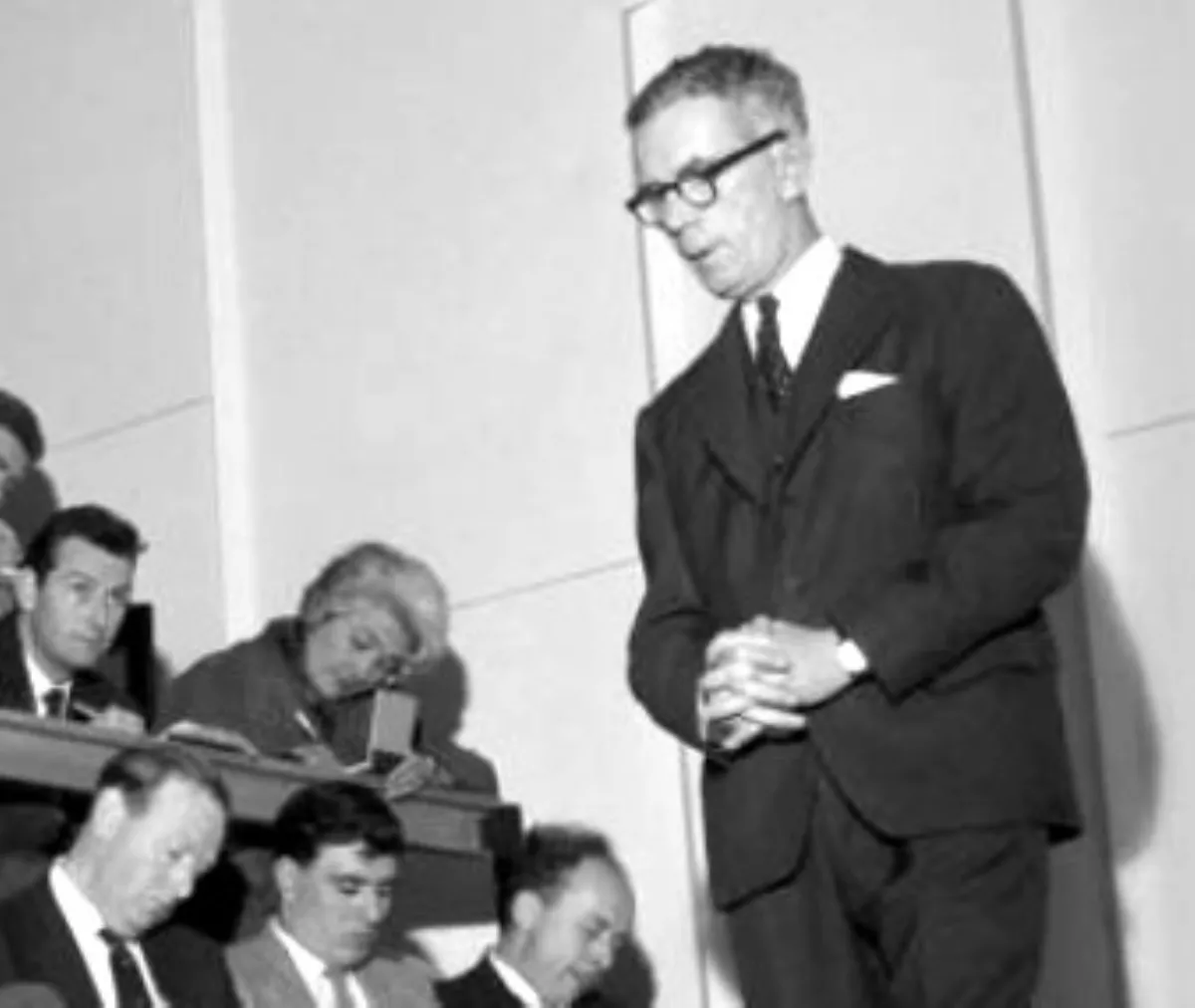 1.
1. Ian Aird was a Scottish surgeon who became Professor of Surgery at the Royal Postgraduate Medical School in London.

 1.
1. Ian Aird was a Scottish surgeon who became Professor of Surgery at the Royal Postgraduate Medical School in London.
Ian Aird came to national and international prominence in 1953 when he led the teams which performed an operation to separate conjoined twins.
Ian Aird attended George Watson's College, Edinburgh, from 1914 to 1923.
Ian Aird was the only pupil in a school of around 1500 pupils to be selected to learn Russian in addition to the normal curriculum.
Ian Aird studied medicine at the University of Edinburgh Medical School, where he was president of the university Student Christian Movement, and he maintained an interest in the Christian faith throughout his life, In 1928 he graduated MB ChB with the Annandale Gold Medal in Surgery and the Wightman Prize for Clinical Medicine.
Ian Aird carried out research in Professor Sir David Wilkie's research laboratories, where he began experimental studies on Hirschsprung's disease and on intestinal obstruction.
Ian Aird was then asked to operate on a senior German officer, Fritz Stephan, who had sustained a serious chest wound.
Ian Aird became one of the pioneers of the mobile forward surgical unit and described his experiences in a Honeyman-Gillespie lecture in 1944.
Ian Aird returned with great enthusiasm to surgical research and postgraduate teaching.
Ian Aird arrived at a department which had very limited accommodation and facilities, but which, over the next 15 years he was to develop into a surgical unit with an international reputation for research and innovation.
Ian Aird came to national prominence leading the surgical team which in 1953 separated Nigerian conjoined twins.
Ian Aird suggested greater co-operation between doctors and the media, recommending that to lessen intrusion, the press be given more and earlier information about such cases.
Ian Aird had no private practice to benefit from publicity and so these allegations hurt him deeply.
Ian Aird's department became involved in diverse areas of research including the Melrose-NEP heart-lung machine developed by a young surgeon Dennis Melrose, at that time a lecturer in Aird's department.
The operation was successful and Melrose and William Cleland, a thoracic surgeon in Ian Aird's department, joined the small band of pioneers of open heart surgery.
Ian Aird arranged for Cleland and Melrose to travel to Moscow where they performed several cardiac operation under cardio-pulmonary bypass, and they are credited with introducing open heart surgery into Russia.
Ian Aird regarded his discovery of the association between blood groups and gastric disease as being among his most important contributions.
Ian Aird directed surgical research across a wide range of areas.
Ian Aird travelled widely as guest lecturer or surgical visitor to surgical departments around the globe.
On 21 December 1936 Ian Aird married Ivy Beatrice Margaret Cowes whose father, William Cowes, originally from Scotland, had been a businessman in Buenos Aires.
Ian Aird suffered from depression, and died on 17 September 1962 after taking an overdose of barbiturates in his room at Hammersmith Hospital.
Ian Aird was survived by his wife, son, and daughter.